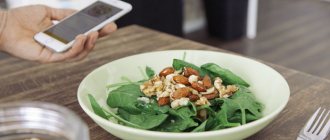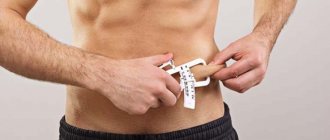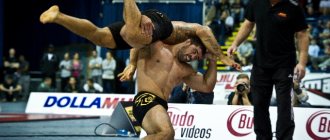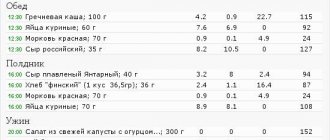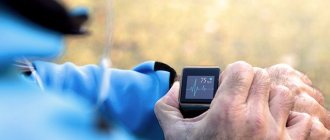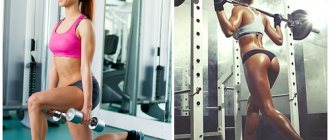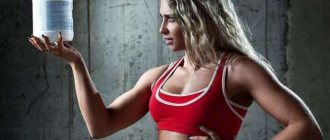"Easy to advise with your current form"
Guys, I very often hear phrases like:
- it is easy for you to speak with your current form;
- you have a special body structure, you are lucky with genetics;
- It’s very difficult for me to lose the remaining layer of fat;
- I do not have enough time;
- I lack motivation;
- I have such a constitution;
This is all absolute nonsense.
There was a time when, having heard enough about “it’s hard to get dry”, “it’s hard to lose weight” and other utter nonsense, I made a bet with my friend that I would gain a lot of fat, and then, as a bet, I’d lose it in 2 months.
I did this so that I would never again hear from people that they cannot tighten their body or remove excess fat. Now, when I hear this kind of nonsense, I just throw off these photos and end the conversation.
With this experiment, I tried to test how well I understand the topics of nutrition, exercise, routine, abdominal structure, and other things. And as practice has shown, if desired and with the right approach, this can be done. However, I had no doubt about this.
And guys, I was in no hurry. I started cutting in April and by June I was already in great shape with a fairly lean, attractive body weighing 85 kg (lost from 97 to 85 kg in 2 months).
I usually do this more slowly to preserve as much muscle as possible, but here I did it as an experiment to throw away all the excuses.
Why Muscle Mass Matters
Many are on the list of tasks for the new year (or next Monday). However, you being renewed doesn't have to be you being lightweight! People often don't realize that weight loss is not always positive, as it can be a signal of loss of muscle mass, which is critical to overall health.
Muscle mass affects a person's strength, energy, mobility and overall health.
According to a review published recently in the Annals of Medicine, muscle mass matters—it affects a person's strength, energy, mobility, and overall health. So while the number on the scale can be mesmerizing, it's important to make sure you're not neglecting your muscles.
I DON'T LIKE WHINNERS, and a little revelation
Friends, I have already been convinced hundreds of times that if a person WANTS and HAS A BURNING DESIRE to achieve something, then he finds thousands of ways to do something, and if he simply has a POSITIVE ATTITUDE, then a thousand reasons not to do it.
I really don't like whiners. I’ll explain why: I’m more than sure that if you put aside whining, take a comprehensive and tough approach to the issue, you can achieve results anywhere. I assure you. Before my eyes, fat people lost weight, thin people became pumped up, poor people became rich, not beautiful people became beautiful, insecure people became confident, and so on. I have seen so many transformations that I am 100% sure that if you have a burning desire and understanding of how to achieve what you want, you will get it in the near future.
Let's have a little heart-to-heart talk, if you don't mind. I will give you some examples from my life, which, I think, will show that all excuses are nonsense.
I'm not going to brag, I just don't like unfounded nonsense, but I like examples.
I'll start with the broken arm. YES, I broke my arm in the forearm when I was 13 years old. Recovery took me more than six months. To be honest, even now my arm does not fully extend in the area of the hand (and I am already 25 years old!), because... broken bones severed the tendon. Do you think I even tell anyone about this? Am I focusing on this? No. I don't care.
I just go out and LOOK FOR WAYS to make my life better.
I choose COMFORTABLE and most effective exercises for myself in the gym.
I did a double somersault on a snowboard, even after a fracture.
He started playing the piano again and graduated from music school.
I ride and rode a bike (not just rode, but did all sorts of tricks with friends).
And, by the way, I started taking bodybuilding seriously AFTER MY ARM FRACTURE. Before that, it was like that, pampering.
In the army, I pumped up my abs UNDER A BLANKET after lights out, so no one could see, because... old-timers were forbidden to play sports (such an army “joke”).
In the army, I tore a ligament in my knee and ended up in the hospital, but I worked even there. I squatted on one leg, holding onto a chair, did press exercises on the floor in the hospital, did push-ups, throwing my leg in a cast over my healthy leg, etc.
I ran 8-kilometer cross-country races in full uniform after being discharged from the hospital.
And so on…
What excuses can there be, friends? LOOK FOR WAYS, NOT EXCUSES!
I have a friend who works on shift, I know that some of my readers too (hello to them), builds roads, and what do you think? He gets up an hour earlier to run in the morning!
After work, at 8-9 o'clock, he goes to the gym! He studies for 1-1.5 hours, then eats and goes to bed.
He bought himself sports nutrition, specifically to digest such a volume of workload; figured out how to eat, etc. You understand? HE FOUND A WAY!
After all, 95% of the guys and men on duty would simply complain that they can’t, it doesn’t work out, etc.
My very cool course on building great abs will be released very soon. This is just the thing before summer! You can both lose weight and form amazing abs with the help of the information from this course.
There are excellent videos against the backdrop of the stunning pristine Karelian nature, namely the mountains where my friends and I go snowboarding in winter.
Everything in it is so detailed that I can’t imagine how much more everything could be chewed up so that people who have long been planning to take charge of themselves would have no excuses.
I spent almost a year creating it. I took my time so as not to release half-grade trash into the world.
Bioimpedance: what, why and why?
Well, let's start, as usual, with the background, or rather, coverage of the work that was done earlier. Let it be known to you that with this article we are completing the cycle of sports-medical notes, because we have discussed all the previously discussed topics, and these include [Sports ointments], [How to train with sore joints?] and [Tests for an athlete]. If you are still clueless, then we strongly recommend that you familiarize yourself with these writer’s masterpieces :), but we will go further and today we will analyze a procedural topic - bioimpedance.
It's no secret that people come to the gym primarily to change their physique. However, for many, the indicator in important matters is the usual scales and the deviation of the arrow on them in one direction or another. So, for example, young ladies immediately after 40 minutes of group jumping run to the scales and, seeing the arrow there creeping to the left, they think that they have lost weight (the fat mass has gone away). On the contrary, the male gender, noticing the deviation of the scale arrow to the right, states that muscle mass has begun to gain. Both the first and second are wrong, because the arrow on the scale is not a direct indicator of changes in the quality of the physique. At the everyday level, it is more correct to pay attention to such parameters as:
- anthropometry – body measurements taken on an ongoing basis once every 2 weeks;
- reflection in the mirror – visually real changes in the figure;
- clothing markers - began to “fit better” into their old things.
However, the everyday level is a primitive level, and it does not give a complete picture to a person of his internal-external changes and state of health in general. Therefore, a potential bodybuilder or athlete who has decided to seriously take on changing their figure should pay attention to more modern methods of analyzing body composition, for example, the bioimpedance method (BIA). This is what we will talk about in more detail later in the text.
Note: For better assimilation of the material, all further narration will be divided into subchapters.
Bioimpedance: main features
Bioimpedance is a diagnostic method that allows, based on measured values of electrical resistance and anthropometric data, to estimate the absolute and relative values of body composition parameters, as well as the body’s capabilities and the risks of developing certain diseases.
The main audience includes people who want to achieve an ideal (in their opinion) figure, for example, girls who want to properly lose weight without tissue dehydration and damage to muscle mass, or who want to gain muscle mass with a minimum amount of fat.
The main capabilities of BIA include measurements:
- fat mass;
- body mass index;
- percentage of body fat;
- amount of muscle tissue;
- percentage of active cell mass;
- quantity and distribution of fluid in the body;
- basal metabolic rate;
- waist to hip ratio;
- biological age.
How is the procedure itself carried out and how does the method work?
The human body is a chain of resistances and capacitors. The BIA method is based on the assumption that fat is a conditional insulator (does not conduct/poorly conducts current due to its lipid composition), since it does not contain water (values of the order of 5-10 %), and the conductor is the fat-free mass. Due to the large amount of water contained in muscles (up to 75% ), they are a good conductor (fat-free mass will have less resistance to electric current). The faster the signal travels, the more muscles a person has.
Thus, the electrical signal travels quickly through water, which is present in hydrated muscle tissue, but encounters resistance when it hits fat tissue. This resistance is called impedance.
Electrical conductivity is affected by the ratio of ions, the condition of bone tissue and other important processes in the body.
Note:
The ability of tissues to transmit electric current is associated with a high concentration of water in the body and electrolytes dissolved in it.
The bioimpedance procedure itself consists of placing electrodes on certain parts of the body (lower leg and forearm) and passing a small ( 50 kHz) alternating current through them. Sensitive sensors record the required indicators, and the computer produces the finished result.
Based on impedance measurement data, the athlete will be able to determine whether his current combination of training program and nutrition plan is working and in which direction he is moving in relation to his goals.
Pros and cons of BIA
If you are going to carry out this procedure, then know that it has both advantages and disadvantages. The first include:
- accuracy of results (error up to 5%);
- speed of implementation (on average 10-15 minutes);
- painlessness (no current is felt);
- accessibility – carried out in any “mid-range” fitness center;
- relatively low price for the procedure ( 700-1000 rubles) or free if you have a club membership (annual subscription).
Disadvantages of BIA include:
- gender bias. Men and women store fat around the belly and thighs differently, so results (a measure of overall body fat percentage) may be less accurate;
- the amount of fluid consumed before the procedure. Electricity passes more easily through water. A person who drinks a lot of water before the procedure will have lower body fat percentages. Decreasing the amount of water will increase your body fat percentage. Therefore, for the accuracy of the results, it is better not to eat/drink 1.5-2
- The timing of the procedure can also contribute to the final results, so it is better to carry out the analysis at the same time of day, namely before breakfast, before training or 1.5-2 hours after drinking/eating.
We've covered some theoretical points and now let's get down to...
Bioimpedance: practical side. Learning to read and understand data.
Let's assume that you completed the BIA procedure yourself and received the results. However, the printouts themselves do not mean anything; you need to be able to interpret them correctly in order to understand what “internal” changes are happening to you (how your body composition changes). And the following guide to parametric decoding will help us figure this out.
No. I. Descriptive models of human body composition
, 2 or 4 parametric models are most often used
- 2-component: 1) fat, 2) fat-free mass;
- 4-component: 1) muscle mass/protein (protein), 2) total body water (TBW) = inside + extracellular fluid (Intracellular/Extracellular), 3) bone mineral mass (bone mineral), 4) fat mass (fat ).
The basic 2- component model considers only fat mass and fat-free mass. This model is widely used in hydrodensitometry and anthropometric measurements and has its limitations. Multivariable models take into account other parameters in addition to fat and lean mass. With the help of such models, it is possible to study the composition of a person’s body more “deeply” and provide more complete/detailed recommendations regarding maintaining a person’s health (including changes in physique through a training program and diet).
No. II. Basic parameters of human body composition
Everyone who has undergone the bioimpedance procedure receives a printout with the results of the analysis. What does literally each line mean? We will talk about this further and start with...
No. 1. Body Mass Index (BMI/BMI)
BMI = weight (kg)/H*H (sq.m.) – an indicator for approximate assessment of the degree of obesity (correspondence to body weight and height of a person).
The following normalized BMI values exist.
Key findings on BMI:
- BMI is directly affected by body type and bone thickness;
- the same BMI value (depending on the presence/conditionally absence of muscle mass) can correspond to both a rather voluminous/dense and a toned athletic figure;
- In ectomorphs, BMI usually has low values (less than 18,50).
No. 2. Fat mass (FM)
The mass of human adipose tissue, which is represented by two components: 1) main/essential fat and 2) stored fat. Fat serves as an energy source for the body (supports human functionality), and is also responsible for reproductive functions and acts as a “nerve winding” (myelin sheath).
Key findings on FM:
- depending on gender, age and race, the percentage of fat can be different (in women it is 10-12% more than in men);
- with age (especially after 40 ), the percentage of visceral fat (around organs) increases and muscle mass decreases;
- Average normal values of fat mass for ordinary people are: for men - 18-20% , women - 25-27% ;
- non-professional/non-performing female athletes should not pursue a low percentage of fat (“hard to dry”/values of 10-12% ) and, as a consequence, a high percentage of muscle mass, because this threatens hormonal shifts and disruption of the reproductive process;
- the percentage of adipose tissue determines whether a person has health problems and excess weight (whether he is obese);
- an arrow to the left on the scale while dieting does not mean a reduction in the percentage of adipose tissue; it is possible that a person has lost weight due to muscles.
No. 3. Fat free mass /lean mass
Lean muscle mass (LBM) is the total amount of fat-free (lean) part of the body, which consists of water, protein, minerals and ash. The LBM is mainly represented by bones, muscles, proteins, tendons and tissues of all internal organs.
Key findings on FFM/LBM:
- changes (increase in parameter) indicate a gain in lean muscle mass;
- Peak values are reached at the age: for men 25-30 , for women 30-35. After passing these age milestones, lean muscle mass decreases;
- It is most beneficial for the development of large muscles to start exercising as early as adolescence ( 15-16 years old), in order to subsequently achieve your peak volumes in a relatively short time;
- muscle cells burn more calories ( 30 kcal/kg) versus fat cells ( 6 kcal/kg), so by increasing lean muscle mass, you will reduce the percentage of fat tissue;
- normal percentage of pure muscle mass: for men 75-85% , for women 65-75% ;
- body types/ectomorph/rectangle body types do not necessarily have low lean mass values. This is determined by bone mass (the person himself is thin, but has heavy bones);
- Nutritionists use lean mass to calculate the consumed energy component of the diet. The nutritional structure of people with different levels of lean body mass will be different.
No. 4. Active cell mass/ACM fraction
It includes the following structures: nerve cells, muscle and organ cells, intracellular fluid.
Main conclusions on AKM:
- in the process of losing weight, it is important for a person to lose fat mass and, at a minimum, maintain the same level of AFM;
- normal AKM% values for men are over 53% , for women – over 50% ;
- As the athlete becomes more trained (his performance capacity increases), the proportion of ACM increases.
No. 5. Muscle mass/musculoskeletal mass (SMM)
SMM is the portion of lean mass that consists of muscle and is considered an important indicator of overall physical strength. The skeletal muscle mass consists of aqueous (liquid/water up to 75% ) and non-aqueous (actin/myosin proteins) parts. It depends on the level of physical fitness and the diet that a person follows.
In the human body, it is customary to distinguish 3 types of muscle tissue: 1) skeletal (voluntary) - for performing skeletal movements, 2) smooth muscles - located in the walls of organs/structures (esophagus, stomach), 3) cardiac muscle.
Key conclusions on SMM:
- average values for men/women are 42/36% of body weight;
- during training, your body weight may increase, but these may be qualitative changes - an increase in muscle mass (muscle is denser than fat) and a decrease in fat mass;
- The more SMM a person has, the greater the amount of work (muscle loading capacity) he can carry out/perform during a workout.
No. 6. Basic exchange/specific basic exchange (BM/SBM)
Basal metabolism is the minimum energy expenditure (kcal) necessary to maintain the life of the body in a state of complete rest ( 12 hours after eating). Specific OO determines the intensity of metabolism (metabolism) and is calculated as the ratio of basal metabolism to body surface area (which depends on height/weight).
Main conclusions on OO/UOO:
- The more ACM, the more energy is spent on metabolism (ME), blood circulation and other vital functions. An increase in ABM/acceleration of metabolism (may be associated with the development of fitness) can contribute to a person’s weight loss;
- normal values of OO for men are 1500-1800 kcal, for women 1300-1500 kcal;
- after 30 years, OO decreases every year, which means making adjustments to your diet (reducing energy components, cutting fats/carbohydrates).
No. 7. Total body water (TBW)
TBW is the total body water content. This parameter changes with age (a younger person has a higher percentage of TBW in the body than his older counterpart). In early (adolescent) age, the content of total water in the body can reach up to 80-83% (in the elderly/after 60 years, up to 55-45% ).
The formula TBW = ICW + ECW means that total body water represents intracellular and extracellular fluids combined.
No. 7.1. Extracellular water (ECW)
Fluid found outside the cells of the body. It consists of:
- blood plasma;
- lymph;
- intercellular fluid;
- transcellular fluid (cerebrospinal, intraocular, abdominal, pleura, pericardium, joint capsules, synovial and gastrointestinal tract).
The amount of extracellular water is 40-45% of TBW.
No. 7.2. Intracellular water (ICW)
All fluids found inside the cells and tissues of the body. The amount of intracellular water is 20-25% of TBW.
Key findings on TBW:
- in tissues with a high water content, as a rule, a greater intensity of metabolic processes is noted and vice versa; Therefore, to lose weight you should be hydrated (drink enough water per day);
- In men, the water content in the body is slightly higher than in women (on average by 10% ), so men, in theory, are able to lose weight easier/faster;
- The more a person weighs (at the same gender), the more water there is in his body and vice versa.
No. 8. Waist/hip circumference & waist/hip ratio ( WHR index)
An indicator that contributes to determining a person’s figure/build type, based on anthropometric data (measurements). Changing the parameter upward or downward allows you to judge the effectiveness/ineffectiveness of the training program + nutrition plan combination.
Key findings on anthropometry:
- normal waist circumference values for active women of normal build (up to 30 years old) are 60-70 cm, for men (up to 30 years old) – 70-85 cm;
- a waist-to-hip ratio in women from 0.6 to 0.72 indicates an ideally proportioned figure;
- WHR index values of 0.85 for women and men indicate abdominal-visceral obesity.
No. 9. Classification by percentage of fat mass
A value scale that shows which “fat category” a person belongs to. Values from 20 to 30% are normative.
No. 10. Phase angle
It is considered as an indicator of the body’s fitness and endurance, as well as the degree of metabolic intensity. The value of the phase angle determines biological age (the correspondence of physical parameters to actual age).
Main conclusions regarding phase angle:
- standardized values are: below 4.4 - low, in the range 4.4-5.4 - low, above 5.4 - normal, above 7.8 - very high;
- indicators of 5.5 and above indicate the good condition of cell membranes, as well as a high percentage and activity of skeletal muscles and are most often recorded in athletic people in good health;
- with age, the phase angle values decrease;
- the higher the phase angle, the lower the biological age of a person;
- In ectomorphs (thin body type), the phase angle may have low values.
So, we have theoretically analyzed the main parameters of the composition of the human body, now let’s get down to it...
How I gained “lean muscle mass”
As I already said, what pushed me to go to the gym was that I began to gain weight. That is why, when I began to work on myself, I was pathologically afraid of returning to that same state. I was afraid of turning back into the fat, doughy guy I used to be.
I wanted to gain muscle mass, but not gain excess fat. I was afraid of this.
That is why I had to study this issue very deeply.
Is it possible to gain muscle mass without fat or with a maximum bias towards muscles?
We have already talked to you about the fact that simultaneous burning of fat and gaining muscle mass is a very difficult task, if at all possible, because, with a lack of calories, the body triggers catabolic (destructive) reactions that affect the muscles too.
Therefore, gaining muscle becomes almost impossible when you are in a calorie deficit. But, nevertheless, there are certain tricks that allow you to gain muscle mass with a minimum content of fat in the body.
Today the topic will be very interesting and unexpected. Lean muscle mass is a very convenient myth for sports nutrition manufacturers and fitness centers. But we will actually look at some points that allow you to gain muscle while dieting.
How to eat while gaining muscle mass? Practical advice
The hormone insulin controls the deposition of fat in the body. It is secreted by the pancreas in response to food intake. Moreover, in direct dependence - the more you eat, the more insulin you have in your blood. And further: the more fat you have under your skin. Well, now tense your head. How to limit insulin secretion? That's right, you need to eat less! Yes, this is exactly the advice that fashion magazines give to their readers, but on such a diet a bodybuilder will stretch his legs in just a week. The answer you need sounds like this: eat little, but often! As a result, you will get a lot of calories without the threat of an insulin meltdown.
So, remember the first rule: a bodybuilder eats 6 times a day. Look, someone has already torn his hat off his head and is trampling it underfoot! Like, this is simply impossible! What about the family? Job? Live to eat?!
Food is pleasure just like sex. Against the backdrop of hard training, it becomes doubly enjoyable. So, by multiplying the number of meals, bodybuilding only increases the degree of pleasure in your life. But seriously, organizing frequent meals is perhaps the most troublesome aspect of sports. It requires strict discipline and the ability to plan. If you don’t have any trace of anything like that, grit your teeth and take on self-education.
Believe me, not only the size of your biceps, but also your entire success in life depends on these character traits. Organizing frequent meals is only one test of strength, and it’s far from the toughest.
And now about the second rule. Insulin secretion is influenced by food composition. Carbohydrates are especially active in this regard. For this reason, they can be taken no more than 40-80 grams at a time. In this case, the specific serving size depends on your natural dimensions. The upper limit is for especially large guys who already weigh over one hundred kg.
You only need 5-10 g of fat (per single dose) and 40-60 g of protein. The secret is that our digestion perfectly absorbs nutrients only if the “correct” ratio of proteins, fats and carbohydrates in a dish is present. An attempt to go beyond the boundaries of these numbers is fraught not only with excess fat, but also with a stop in muscle growth. In fact, muscle nutrition will worsen.
The mistake of the old days is that the bodybuilder consumed a lot of calories all day long. But if you want to grow muscle instead of fat, you can only eat a lot three times: in the morning, at breakfast, and after training. Or in even portions, six times a day. The main condition is to set the required amount of calories. Also, it is advisable to consume carbohydrates in the first half of the day, and take protein foods in the second half of the day.
At night, the body only spent energy, and in the morning it desperately needs to be replenished. For this reason, breakfast should be high in calories. And then everything will be absorbed without leaving a trace. The breakfast example is quite simple. For example, when you wake up in the morning, it would be good to immediately drink a protein shake consisting of whey protein. It is quickly absorbed and replenishes the body's need for protein. If there is no protein, we immediately start cooking or heating the food. An excellent breakfast would be buckwheat with a light, low-fat salad. By the way, the salad can be seasoned with flaxseed or olive oil. It is better not to eat meat in the morning and give preference to cereals that contain slow carbohydrates, which the body needs to absorb protein and provide the body with energy.
The situation is somewhat different after training. The muscles are extremely exhausted and need nutrition, and therefore the subsequent meal should be especially rich in calories. Moreover, restrictions on carbohydrate intake are lifted. They can be taken twice as much as the known norm - up to 180 g. Moreover, without the risk of fat deposits. Yes, carbohydrates will cause insulin secretion, but after training it “forgets” about fat and acts as a transport hormone. Insulin “carries” carbohydrates and sugar on itself, and actively nourishes muscle cells with them.
The remaining meals contain a relatively modest number of calories, however, taking into account the abundant breakfast and the heavy load of proteins and carbohydrates after training, the daily calorie intake will be record high.
Let's summarize
To add lean muscle mass, you only need to eat a lot twice a day - at breakfast and after training. The rest of the day, the rule you already know “eat little, but often” applies.
Another mistake of the past was that the bodybuilder ate the same amount on rest days. Having set a high carbohydrate intake for themselves, the athletes continued to consume it during the recovery period. The energy consumption of rest is incomparably lower, and therefore excess carbohydrates became absolutely unnecessary. Here insulin came to the rescue and converted excess sugar into fat.
But if only this! The fact is that in the evening insulin increases its activity. So a large amount of carbohydrates in evening meals became doubly fatal.
According to sports science, protein intake should remain consistently high: up to 4 grams per kilogram of body weight on training and rest days. This means that reducing the proportion of carbohydrates in the diet will entail a major reduction in the calorie content of the daily diet. If on training days there are 36-40 calories per kilogram of body weight, then the recovery period requires reducing this figure to 24-28 calories. And this is the last rule of “proper” nutrition. You will have to vary the calorie content of your daily menu every now and then, and this will become a reliable guarantee of the growth of “lean” muscles.
Lean muscle mass. Is it possible to dial?
I had to experiment a lot, study and try, but, in the end, I was able to identify for myself a few basic rules in order to gain muscle mass and look quite lean at the same time.
Here are the main ones:
- There should be ENOUGH calories, BUT NOT EXCESSIVE ! This process must be strictly controlled. Theoretically, you should get exactly what you need to build your muscles, and there should be no excess so that the body does not store them in the form of fat deposits. In practice, this is VERY HARD to implement, because... Calorie consumption is influenced by many factors: how you slept, how much training you did, how nervous you were, what foods you ate, how high your metabolism is, how much muscle is in your body, etc. It is practically impossible to accurately calculate sufficient, but not excessive, calorie consumption every day. Therefore, be prepared that you will walk a very fine line and keep either “one foot” in conditions of anabolism, or “the other foot” in conditions of catabolism. In such conditions it is VERY DIFFICULT to type! You will either lose muscle or gain muscle. There will be progress, but very slow. There is no need to expect fantastic results.
- In order for muscles to grow, you need to provide the muscles with a heavy load (in the range of 6-12 repetitions), i.e. There is no talk of pumping. Many people, when on a diet, begin to greatly reduce working weights and work in high repetitions. This is a mistake if you want to preserve the maximum amount of muscle, because under such conditions the body WILL NOT SEE THE NEED for maintaining muscle mass. The ideal option, from my point of view, is 4-6 approaches with a slightly lower working weight (weight will fall in any case on a low-carbohydrate diet), and then 1-2 approaches in pumping mode to further fatigue the muscles ( for 10-15 repetitions).
- It will be easier for a beginner to gain leanness at the beginning of his training journey than for a more trained athlete. Yes, gaining weight in a calorie surplus WILL HAPPEN BETTER because it ensures that you have enough calories and nutrients (the body stores the excess). Therefore, reasonable obesity is even beneficial here. BUT! At the very beginning, the muscles of beginners change, mainly NOT DUE TO HYPERTROPHY (the weights are small, so the load is insignificant), but due to the transformation of various systems in their body (endocrine, accumulation of nutrients, nervous, etc.), efficiency changes energy consumption. Therefore, the muscles will look more full. YOU WILL GAIN WORSE, BUT IT IS POSSIBLE TO GAIN SO MUCH at the very beginning if you are afraid of excess weight.
- Gaining “lean” muscle mass with pharmacology is much easier than naturally. An elementary conclusion, but still, I think it was worth mentioning. At the beginning of your training, there can be no talk of any pharmacology, of course, but, from a theoretical point of view, you should know this. Testosterone and its esters, as well as, in particular, growth hormone, promote accelerated protein synthesis, which allows you to gain weight several times faster, and, in connection with this, the need for protein and carbohydrates increases. All metabolic and anabolic processes in the body are accelerated. We will not consider pharmacology today.
These are the main points.
Again:
- There should be enough calories, but not excessive!
- The load must be high enough! There is no need to reduce the weight on the apparatus during a diet (only forcedly, since it will most likely decrease a little anyway).
- It is easier for a beginner to build leaner muscle mass than for a more trained athlete (since beginners’ muscles grow from almost everything).
Let's move on to more practical points.
A couple more important factors
When it comes to muscle structure, there are several other important factors that influence it outside the gym. Before you start training, clearly set your goals, measure your weight, amount of fat, body measurements, and be sure to take a photo. And of course, one cannot say nothing about nutrition. It is very important to make sure that you are getting enough calories to gain muscle mass. There are many recommendations about exactly how much protein, how many grams of carbohydrates, etc. you should take daily. It is important that you nourish your body sufficiently, giving it more energy than just to sustain life, so that it has everything it needs to grow.
Gaining Lean Muscle Mass
Although I don’t really like this idea, because... limits the possible progress, but I understand that at the beginning of training a person cannot abstract himself and train in conditions of increased calorie content. It's depressing.
Pressure from others, criticism, some judgmental glances, buying larger clothes - all this seems almost unbearable at the beginning precisely from a psychological point of view. That's why I think it's important to teach you and give you my opinion on how to gain muscle mass while on a caloric restriction.
Calorie restriction
So, if you set yourself the goal of first losing weight and then gaining muscle mass (this is exactly what I did), then you will need to first learn to control your calorie intake and the proportions of nutrients.
I discussed this topic in great detail in the article: “How to lose weight quickly?”
Read it, there’s all the details about how to start your weight loss journey, about the “starting point” and so on. Be sure to read it.
Also, then you can try more advanced diets for weight loss. They work great. My sister and I always, every year before summer, lose weight this way. Here are two extremely powerful diets:
- "BUCH diet";
- "KETO diet";
Let's better talk about how to eat if you have already lost weight (or were thin/thin), and now you decide to gain weight without excess fat (“lean mass”).
As we said, there should be ENOUGH calories, but not excessive! Those. There should still be a small excess, but not critical and almost unnoticeable, but only as a safety net (in case the body needs a little more energy at some point during recovery).
How to calculate this? In the article on weight loss, linked above, I explained how to calculate the “reference point”.
A “reference point” is a thing where your weight stands still. Those. YOU GET THE SAME CALORIES AS YOU SPEND.
Over time, your “reference point” will get lower and lower, because... the body will lose weight and need a little less energy, but, at a certain point, the weight loss will stop. The body will hit a plateau. You will look thin, which is enough to start gaining weight.
The point is to START INCREASING THE CALORIES IN YOUR DIET A LITTLE LITTLE!
We must add a little (almost like jewelry) calories to our diet. First by 50 g per week, then by 100 g. Until our weight SMOOTHLY begins to move up. For 100-300 g per week. Not more!
Those. THE FIRST GUIDANCE IS THE SCALES (the weight should increase a little!). Although at the beginning of your training you can gain significantly more, so let’s move on to the next benchmark.
The second guideline is the REFLECTION IN THE MIRROR ! You must observe your reflection, look and compare, even better, take pictures! See whether the fat layer on the body is increasing or not. She SHOULD NOT GROW MUCH! Ideally, practically speaking, it should not grow at all!
If you see that the fat layer has increased (you can simply pull back the fold on your stomach and estimate it by eye), then LOWER your calorie content a LITTLE!
The next, third guideline is YOUR WELL-BEING! It is very difficult to ensure PROGRESSION OF LOAD (and it is necessary for muscle growth, otherwise the body will not have the need to adapt the muscles to more serious weights) if you fall off your feet and lack energy.
Therefore, if you feel that your performance has decreased significantly, cold sweat appears, you get tired quickly, and constantly want to sleep, then you need to slightly increase the AMOUNT OF CARBOHYDRATES! A little! For 50-100 g. Everything must be selected very precisely. As I said, almost “jewelry”.
So, remember:
- Focus on the scale (weight should increase by 100-300 g per week MAXIMUM!).
- Watch your reflection in the mirror (you shouldn't get fat quickly).
- Monitor your well-being (if you are tired and have little strength, then add carbohydrates).
Now a little about sports supplements. I am not a supporter of sports nutrition, although it makes life much easier (convenience of preparation, different speed of absorption, etc.). But, in conditions of limited calories, it can serve as a good help.
What supplements can I recommend taking?
BCAA – branched chain amino acids (leucine, isoleucine, valine). They make up 25% of our muscles. If there is a lack of these amino acids (a common phenomenon during a diet), our body uses them as energy and simply burns them. We don't need this.
Dosage regimen: 15-20 g of BCAA before, during and after training.
CREATINE is a NATURAL SUBSTANCE found in human and animal muscles and is essential for energy metabolism and movement.
Creatine can be synthesized by the body (liver, pancreas and kidneys) from arginine, methionine and glycine (these are protein components).
Creatine monohydrate is the MOST EFFECTIVE and popular form of creatine. Its chemical formula is: WATER MOLECULE + CREATINE .
In general, I wrote in great detail about creatine in the article: Creatine monohydrate: what is it for.
Reception scheme:
- 5 g (teaspoon) of creatine monohydrate per day, IN THE MORNING ON AN HARD STOMACH OR IMMEDIATELY AFTER TRAINING, diluted WITH SWEET JUICE (preferably grape);
- Duration of use is 6-8 weeks;
These supplements will be quite sufficient at first.
I think it’s clear from nutrition and progress analysis.
Now, what about training?
Diet
Squirrels
The majority of your diet should be protein, preferably consuming 3.5-4.5 grams of protein per kilogram of body weight. Calories from protein have virtually no ability to be converted into fat, unlike calories from other macronutrients. In addition, the body spends more energy digesting proteins, so consuming protein reduces the chances of gaining excess fat deposits.
Carbohydrates
Your diet should also include carbohydrates. For a lean set, I would recommend consuming them in an amount of 2-3 g per kilogram of weight (if you add more than 300-600 g per week to your weight, then slightly reduce their consumption, and if the increase is less than the specified value, then, on the contrary, increase it) . It is better to use cereals, whole grain bread, and durum wheat pasta as a source of carbohydrates. It is advisable to consume fast carbohydrates only after a workout or during the first meal, and then in small quantities. It is best to consume the daily amount of carbohydrates in the first half of the day so that you have time to spend the energy received from them during the day.
Fats
You shouldn't forget about fats either. As a source of healthy fats, you can look into omega-3 supplements, or, better yet, buy peanut butter.
Workouts to gain lean muscle mass
You need to understand that the concept of “lean muscle mass” is very conditional! All the same, if you gain weight, your muscles will not be very dry, because... if the muscles are dry, then most likely there is NOT ENOUGH NUTRITION!
But it is still possible to recruit in conditions of slight excess or abundance.
Progress, naturally, will not be so pronounced, but it will be, especially for beginners, whose muscles respond to almost any load at the beginning.
By the way, for the first two years of training I trained exactly like this! Until my weight plateaued somewhere around 75-76 kg.
BUT I DID!
Here is a photo of the first couple of years of training, progress, although not so great, was there. And I was relatively dry all year long. I had visible abs, which indicates low body fat (8-12%).
Let's tell you the main features of training during mass gain under conditions of limited calories, or, as they say, “lean muscle mass.”
- PROGRESSION OF LOADS is mandatory ! Muscles will not grow without progression of working weights (get yourself a training diary). First, in the first 2-3 months of training, you work on TECHNIQUE, on developing your brain-muscle connection. You work out with increased weights. In the beginning, you can train your WHOLE BODY IN ONE WORKOUT! Even this will be enough. Then after 2-3 months you can start PROGRESSING! “Split the body into pieces,” i.e. train on a split basis, this will load your muscles harder. Increase your working weight on the barbell. 1-5 kg in each subsequent workout. In the beginning, the weight will increase quite quickly. Then, after a certain time, they will stall. Progress there will be slower.
- We work in the range of 6-12 repetitions, as before . And at the end we perform 1-2 “pumping approaches” for 10-15 repetitions, i.e. we fill the muscles with blood. The movements are fast, within amplitude. This will further fatigue our muscles and deliver nutrients and anabolic hormones to them.
- Over time (after 6-8 months) you can start training with MICROPERIODIZATION OF LOADS ! I won’t talk about this in detail here; I wrote everything in this article. The fact is that in conditions of limited caloric intake you will have to constantly boost your energy, because. you will have noticeably less strength than if you gained in excess calories. Microperiodization will help with this.
Lean Mass Gaining Workout for the Green Beginner
If you just came to the gym, then first you need to learn COMPETENT technique. How to do it?
We train the whole body at a time in one workout (this way the load is less), accordingly, you can get involved in the process more gently and learn how to competently contract muscles.
This is the main task. Without this, your further progress will be much slower. Therefore, LET'S INSTALL EQUIPMENT!
A training program for a beginner might look something like this:
- Army press.
- Barbell row to the chin.
- Barbell curls for biceps.
- Squats.
- Bench press.
- Bent-over barbell row.
- Hanging straight leg raise (abdominal exercise).
Do the above workout 3 times a week, every other day (Monday, Wednesday, Friday, or Tuesday, Thursday, Saturday).
We start with the shoulder girdle, because... in the future, this will allow you to increase your chest and back volumes.
First, we perform one warm-up set (usually with an empty bar) for 12 repetitions, then 3 sets of 10-12 repetitions with a weight that allows you to perform the exercises with the correct technique and feel the work of your muscles.
Weight must be CONSCIOUSLY REDUCED! Approximately 50-60% of working weights!
If you can perform a bench press with 60 kg, then do it with 30-35 kg. WE THINK about the muscle we are training!
Remember, the main thing now is technique!
Training for advanced beginners with linear progression of load
When you have worked on the technique (2-3 months), you can begin to split your body more deeply.
Here is an example of the implementation of such a scheme:
Monday (LEGS):
- Squats: 2 warm-up sets + 3-4 x 8-15.
- Deadlift: 2 warm-up sets + 3-4 x 6-10.
- Standing calves in the machine: 1-2 warm-up sets + 3-4 x 20-30.
- Press: crunch x 3 max
Wednesday (BACK, BICEPS):
- Pull-ups: 1-2 warm-up sets + 3-4 x 6-10.
- Bent-over barbell row: 2 warm-up sets + 3-4 x 6-10.
- Biceps curls (possible with a curved bar): 3 warm-up sets + 3-4 x 6-10.
Friday (CHEST, TRICEPS, DELTS):
- Bench press: 3 warm-up sets + 3-4 x 6-10.
- Military press/seated dumbbell press: 2 warm-up sets + 3-4 x 6-10.
- Dips: 2 warm-up sets + 3-4 x 6-10.
- Press: crunch x 3 max
In this workout, I split my body into several parts (split) and increased the number of approaches. This will help to better work out the muscles being trained, but, as you can see, the number of exercises is only 3-4. This will prevent you from “catch” overtraining.
It is very important that you control the growth of working weights! You must constantly increase the load, because... Without increasing the load, there will be no muscle growth.
Even if you eat ideally, sleep a lot and train properly, sooner or later, there will still come a time when you can no longer gain weight. Your progress will stop.
This is why we will use LOAD PERIODIZATION!
Dividing your workout (split)
Your split workout should follow a full body workout pattern. The idea of a split is to allow a muscle group to properly recover while you train another. Many programs combine two muscle groups together to increase efficiency. Then each muscle group rests and recovers for 48-72 hours, which is quite enough. Below are the options for “traditional” splits:
- Split “one body part per day”: an established bodybuilding program according to the pattern: “chest-back-shoulders-arms-legs-rest”. This type of training gives the body ample opportunity to recover. However, advanced athletes train in a “2 body parts a day” style - they train 2 times a day, training different muscle groups.
- Row-Press-Legs: Includes a press day consisting of exercises for the chest, triceps and shoulders, and a pull day which consists of exercises for the back, biceps and shoulders. And at the end - leg day.
- Chest/back - shoulders/arms/legs: usually a three-day split.
The list is by no means exhaustive, but it is great for beginners and those looking to get back into bodybuilding. For some methods, the program varies from week to week. For example, a row-press-leg split can be transformed into some kind of “wave periodization” method. For example, first there is a three-day split with a low number of sets and repetitions and heavy weights, and then a three-day split with a high number of sets and repetitions and lighter weights. You see, bodybuilding is not only about science, there is clearly a place for creativity.
